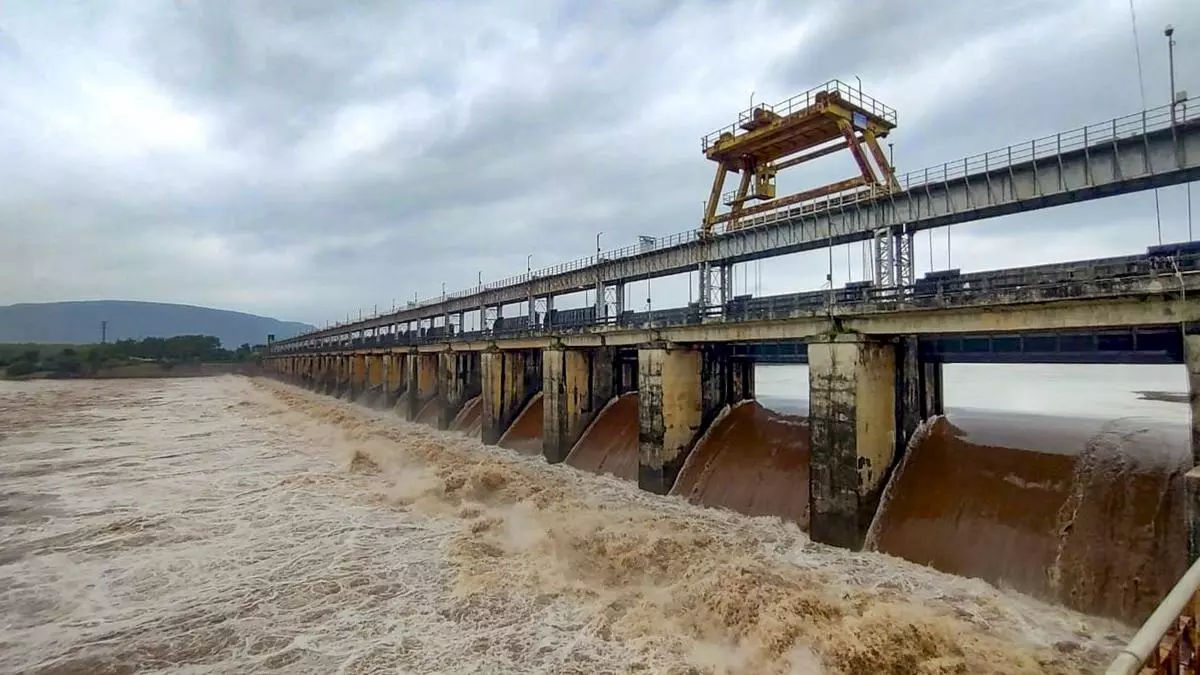90% of major Indian reservoirs filled more than half
Over 20 per cent of India’s 155 major reservoirs were full, while the storage in over 90 per cent of them was above 50 per cent of the capacity this week, thanks to an 8 per cent excess rainfall during the current south-west monsoon.
According to Central Water Commission’s weekly bulletin on the live storage status of major reservoirs, 35 were full and only 15 storages had levels below 15 per cent. This week, the storage increased to 85 per cent of the 180.852 billion cubic metres (BCM) capacity at 153.757 BCM. The level is higher than last year by 29 percentage points and 18 percentage points more than normal (last 10 years average).
Data, however, showed that this week four States had below-normal storage compared with three last week with West Bengal level declining to 4 per cent lower than usual. Punjab (-59 per cent), Himachal Pradesh (-21 per cent) and Bihar (-4 per cent) were the other States which had a negative storage level.
Augurs well for rabi
According to the India Meteorological Department (IMD), east and north-eastern parts of the country have received 16 per cent deficient rainfall so far, while the southern region has been the major gainer, experiencing 24 per cent surplus precipitation.
Of the 724 districts from where data were received by IMD, 26 per cent received deficient rainfall. As many as 27 districts in Uttar Pradesh, 25 in Bihar, 15 in Punjab, 11 in Jammu and Kashmir and five in Himachal experienced deficient rainfall.
The current storage situation augurs well for the oncoming rabi season, though excess rainfall, predicted by IMD, could impact standing kharif crops. Last year, a lower storage level due to below-normal monsoon under the impact of El Nino impacted rabi crops production, particularly pulses and paddy.
South major beneficiary
Among the five regions, the southern one has benefitted the most from the excess rainfall. The Central Water Commission (CWC) data showed that of the 43 reservoirs in the region, five were filled fully. The storage level was 88 per cent of the 54.634 BCM capacity at 48.158 BCM.
The level in reservoirs common to Telangana and Andhra Pradesh was 99 per cent of capacity as also in Telangana. In Karnataka, the storage was 93 per cent and in Tamil Nadu, 87 per cent. In Kerala, the level was 70 per cent and it was 51 per cent in Andhra Pradesh.
Two of the 11 reservoirs in the northern region were full this week with the level rising to 68 per cent of the 19.836 BCM capacity at 13.468 BCM. In Rajasthan, the storage was 91 per cent of the capacity, while in Punjab and Himachal, it was 29 per cent and 66 per cent, respectively.
More rise likely
Of the 50 reservoirs of the western region, 19 are full with the level rising to 90 per cent of 33.526 BCM of the 37.357 BCM capacity. While the storage in Goa was full, it was 97 per cent Maharashtra and 82 per cent in Gujarat.
In the eastern zone, the level in the 25 reservoirs was 76 per cent of the 20.798 BCM capacity at 15.797 BCM. Apart from Bengal and Bihar, the storage in Assam (4 per cent), Odisha (13 per cent), Nagaland, Jharkhand (3 per cent), Tripura (32 per cent) and Nagaland (95 per cent) was higher.
Two of the 23 reservoirs in the central zone are full with the level rising to 89 per cent of the 48.227 BCM capacity at 42.808 BCM. The storage in Madhya Pradesh was 95 per cent, while it was 71 per cent in Uttar Pradesh. Uttarakhand and Chhattisgarh storages were filled to 81 per cent and 86 per cent of the capacity, respectively.
With the south-west monsoon being active over north-west and eastern parts, the reservoirs’ storage will likely increaser further.
